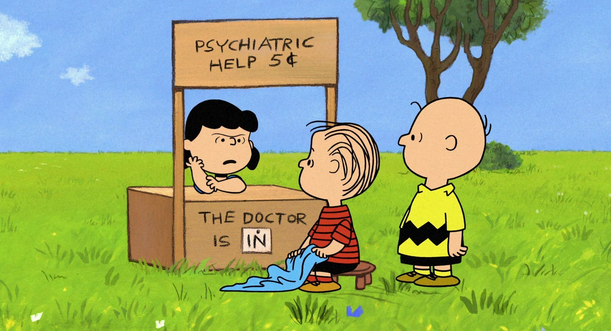Generally speaking, culture-specific, or culture-bound, syndromes are mental disturbances that only find expression in certain cultures or ethnic groups, and that are not comfortably accommodated by Western psychiatric classifications such as the DSM and ICD. DSM-IV defined them as 'recurrent, locality-specific patterns of aberrant behavior and troubling experience...'
One example of a culture-bound syndrome is dhat, which is seen in men from South Asia, and involves sudden anxiety about loss of semen in the urine, whitish discoloration of the urine, and sexual dysfunction, combined with feelings of weakness and exhaustion. The syndrome may originate in the Hindu belief that it takes forty drops of blood to create a drop of bone marrow, and forty drops of bone marrow to create a drop of semen, and thus that semen is a concentrated essence of life.
DSM-5, published in 2013, replaces the notion of culture-bound syndromes with three 'cultural concepts of distress': cultural syndromes, cultural idioms of distress, and cultural explanations for distress. Rather than merely listing specific cultural syndromes, DSM-5 adopts a broader approach to cultural issues, and acknowledges that all mental disorders, including DSM disorders, can be culturally shaped.
However, some DSM disorders are, it seems, much more culturally shaped than others. For instance, PTSD, anorexia nervosa, bulimia nervosa, depression, and deliberate self-harm (non-suicidal self-injury) can all be understood as cultural syndromes. Yet, for being in the DSM, they are usually seen, and largely legitimized, as biological and therefore universal expressions of human distress.
Thus, one criticism of classifications of mental disorders such as DSM and ICD is that, arm in arm with pharmaceutical companies, they encourage the wholesale exportation of Western mental disorders, and, more than that, the wholesale exportation of Western accounts of mental disorder, Western approaches to mental disorder, and, ultimately, Western values such as biologism, individualism, and the medicalization of distress and deviance.
In her recent book, Depression in Japan, anthropologist Junko Kitanaka writes that, until relatively recently, depression (utsubyō) had remained largely unknown to the lay population of Japan. Between 1999 and 2008, the number of people diagnosed with depression more than doubled as psychiatrists and pharmaceutical companies urged people to re-interpret their distress in terms of depression. Depression, says Kitanaka, is now one of the most frequently cited reasons for taking sick leave, and has been 'transformed from a rare disease to one of the most talked about illnesses in recent Japanese history'.
In Crazy Like Us: The Globalization of the American Psyche, journalist Ethan Watters shows how psychiatric imperialism is leading to a pandemic of Western disease categories and treatments. Watters argues that changing a culture's ideas about mental disorder actually changes that culture's disorders, and depletes the store of local beliefs and customs which, in many cases, provided better answers to people's problems than antidepressants and anti-psychotics. For Watters, the most devastating consequence of our impact on other cultures is not our golden arches, but the bulldozing of the human psyche itself.
He writes:
Looking at ourselves through the eyes of those living in places where human tragedy is still embedded in complex religious and cultural narratives, we get a glimpse of our modern selves as a deeply insecure and fearful people. We are investing our great wealth in researching and treating this disorder because we have rather suddenly lost other belief systems that once gave meaning and context to our suffering.Distressed people are subconsciously driven to externalize their suffering, partly to make it more manageable, and partly so that it can be recognized and legitimized. According to medical historian Edward Shorter, our culture's beliefs and narratives about illness provide us with a limited number of templates or models of illness by which to externalize our distress. If authorities such as psychiatrists and celebrities appear to endorse or condone a new template such as ADHD or deliberate self-harm, the template enters into our culture's 'symptom pool' and the condition starts to spread. At the same time, tired templates seep out of the symptom pool, which may explain why conditions such as 'hysteria' and catatonic schizophrenia (schizophrenia dominated by extreme agitation or immobility and odd mannerisms and posturing) have become so rare.
The incidence of bulimia nervosa rose in 1992, the year in which journalist Andrew Morton exposed Princess Diana's 'secret disease', and peaked in 1995, when she revealed her eating disorder to the public. It began to decline in 1997, the year of her tragic death. This synchronology suggests that Princess Diana's status and glamour combined with intense press coverage of her bulimia and bulimia in general led to an increase in the incidence of the disorder.
An alternative explanation is that Princess Diana's example encouraged people to come forward and admit to their eating disorder. By the same token, it could have been that the Japanese had always suffered from depression, but had been hiding it, or had not had a template by which to recognize or externalize it. The danger for us psychiatrists and health professionals when treating people with mental disorder is to treat the template without addressing or even acknowledging the very real distress that lies beneath.
Adapted from the new edition of The Meaning of Madness .
Find Neel Burton on Twitter and Facebook .




Comment: Psychiatric Disorders: The Facts Behind the Billion Dollar Marketing Campaign